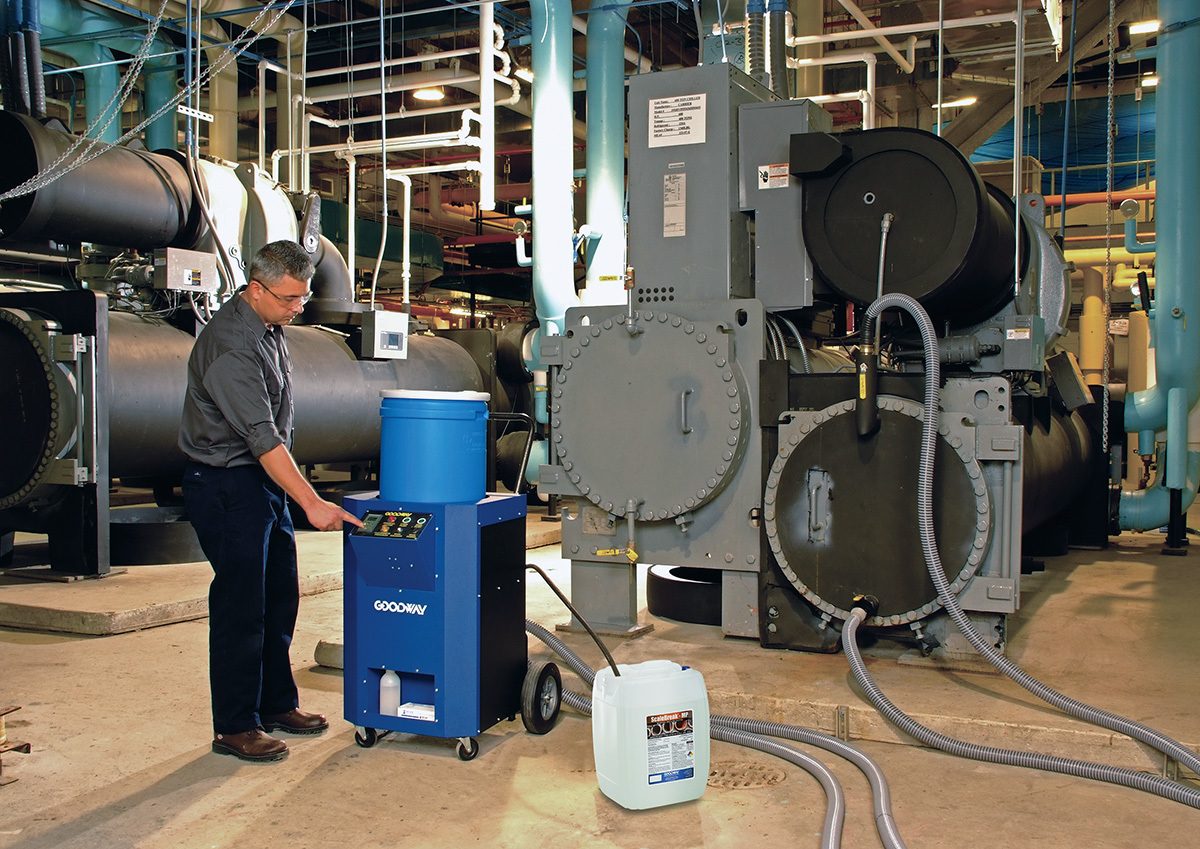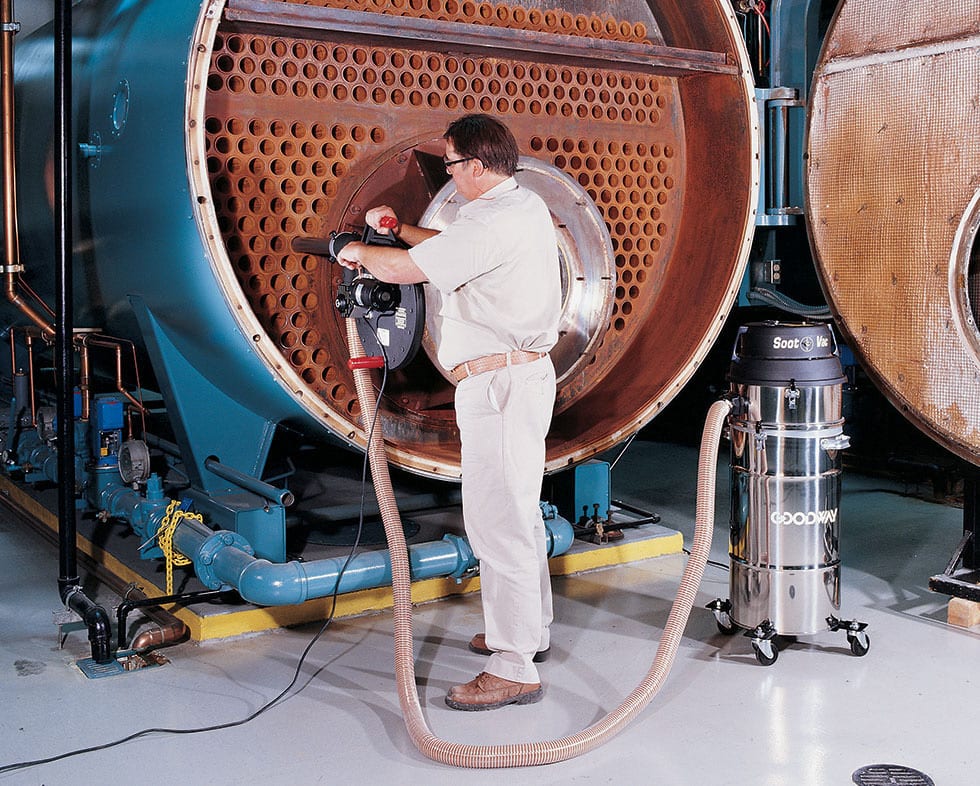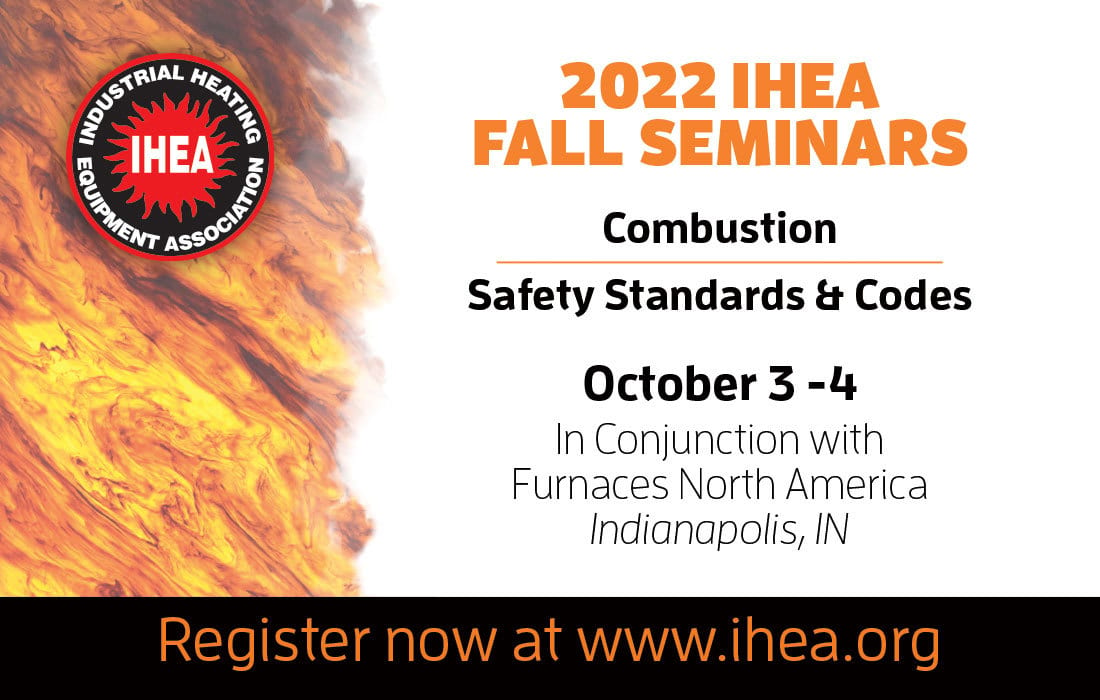Boiler Cleaning
Helps Improve Efficiencies and Costs
Boiler Maintenance
All images provided by Goodway Technologies
By Engineering Team,
Goodway Technologies
When scale deposits are allowed to form, it can lead to under-deposit corrosion of the base metal.
Using effective cleaning equipment, maintenance staff can extend the service of boilers and help prevent repairs or replacements.
One of the largest expenses for any facility can be the operational and maintenance costs related to heating and cooling equipment. Industrial boilers, unfortunately, are a large part of that. A boiler is one of the hardest-working and longest-lasting pieces of equipment in a facility, which makes it even more critical to incorporate preventive maintenance of boilers into your overall cleaning and maintenance plan.
Here are some best practices and reminders on getting started with boiler cleaning.
Why Is Boiler Cleaning Important?
One of the most common reasons for a reduction in efficiencies is dirty boiler tubes. Put simply, when boilers accumulate soot in the fireside tubes and limescale on the waterside tubes, it is going to increase operating expenses. Both types of buildup act as an insulation barrier on the heat transfer surface, reducing efficiency and increasing the amount of fuel needed to reach the desired results.
It does not take long for these deposits to develop, unfortunately, and even the smallest amounts can cause a loss in efficiency. For example, imagine boiler maintenance is neglected, and it results in 0.03125" of scale buildup on the waterside of the tubes. According to the U.S. Department of Energy, this will increase energy costs by around 2 percent, resulting in an estimated additional $72,000 in fuel costs throughout the year. That is a big impact on the bottom line.
In understanding the importance of boiler cleaning, an increase in fuel consumption is not the only expense to consider. When scale deposits are allowed to continue to form without being addressed, it can lead to under-deposit corrosion that eats into the base metal. This can result in equipment repair that can be more costly than conducting preventive maintenance.
The way to keep a boiler healthy and operating at its highest efficiency is to perform regular maintenance.

Proactively incorporating boiler maintenance into the routine maintenance plan and continually monitoring the boiler’s efficiency will go a long way to cut unexpected expenses due to fouling.
How Often Should an Industrial Boiler Be Cleaned?
Environmental conditions play a big part in determining how often boiler maintenance should take place. One of the best ways to determine a boiler’s efficiency — and whether cleaning is needed — is to implement regular testing. Testing can help to identify other problems, including incomplete combustion, improper firing ratios and impingements on the flame.
Keep daily logs on the following:
- Type and amount of fuel used.
- Flue gas temperature.
- Makeup water volume
- Steam pressure.
- Temperature.
- Volume.
Ongoing logs will help monitor for any potential issues that might develop or identify problems that could be fixed with proper cleaning.
If the boiler is shut down, a visual inspection also can be conducted to determine the level of scale and soot on the boiler tubes.

Cleaning boiler tubes regularly will lower costs by reducing fuel consumption, increasing output and minimizing detrimental wear and tear.
How Do You Clean an Industrial Boiler?
An important first step is to become familiar with the equipment and which type of cleaning will be most impactful.
Every boiler has two sides that need to be cleaned. One of these sides is the fireside. It contains the combustion of gas, oil or other fuel. The other is the waterside. It is filled with water that absorbs the heat of combustion before being pumped through the pipes to provide heat or process steam to the facility.
Mineral deposits, or scaling, can form on the boiler’s waterside, hindering water flow and heat transfer. The scale is removed through either mechanical or chemical cleaning methods. Mechanical cleaning removes scale with the use of tools like scrapers, brushes or sandblasters. Chemical scale removal uses acids to dissolve the minerals through a chemical reaction between the scale and the liquid. The method used for cleaning — mechanical or chemical — differs depending on the thickness and type of deposits to be removed.
The severity of fireside corrosion and fouling is related to the fuel being burned. Natural gas, propane and petroleum fuels like gasoline or No. 2 diesel fuel produce a light fouling. It typically can be removed by brushes without needing heavy scrapers. Boilers burning wood, medical or municipal waste and heavy petroleum fuels like No. 6 fuel oil often suffer from thick fouling. Often, it only can be removed by a cleaning system with strong brushes and scraping tools.
Proper maintenance and cleaning of both sides are important to keep the boiler functioning properly.
What Cleaning Tools Can Be Used to Clean an Industrial Boiler?
Boiler cleaning has evolved, and tools and solutions make boiler cleaning less labor-intensive. Modern systems are designed to be efficient and achieve better results.
Whether it is the boiler cleaning system or the accessories such as brushes and scraping tools, it is important to find the appropriate solution. Choosing the boiler cleaning system is informed by the boiler type, the severity and fouling to be removed, and any desired system features like portability and power. Speaking with the manufacturer can help ensure the systems and tools chosen are suited to the cleaning task.
In conclusion, it can be easy for ongoing cleaning and maintenance to drop to the bottom of the to-do list with all the other responsibilities in a processing facility. Proactively incorporating boiler maintenance into the routine maintenance plan and continually monitoring the boiler’s efficiency will go a long way in cutting unnecessary expenses. Cleaning boiler tubes regularly will lower costs by reducing fuel consumption, increasing output and minimizing detrimental wear and tear.
This article was provided by the engineering team at Goodway Technologies, Stamford, Conn. For more information from Goodway Technologies, call 800-333-7467 or visit goodway.com.



